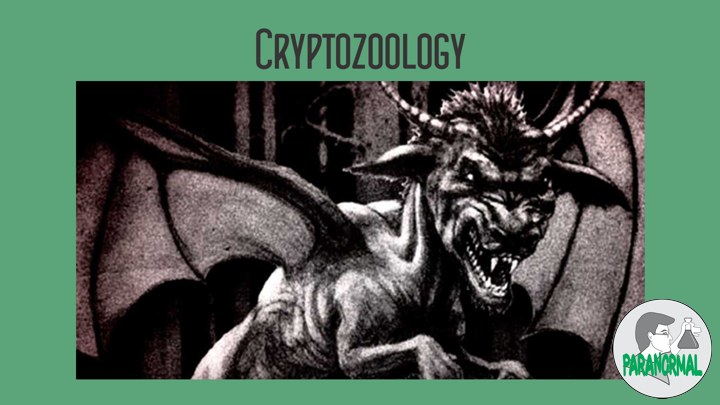——
#Paranormal #DrScientist #ExtrasensoryPerception #Spiritualism #Cryptozoology #Telekinesis #Poltergeists #Ghost #UFO #Alien #Extraterrestrial
——
——
——
——
Cryptozoology
Cryptozoology is a science that searches for and studies unknown have long held a fascination for people the world over. Debates about their actual existence or what they might really be have continued for centuries. While biologists regularly identify new species, cryptozoologists often focus on creatures from the Loch Ness Monster, Sasquatch, the Chupacabra. In their search for these entities, cryptozoologists may employ devices such as motion-sensitive cameras, night-vision equipment, and audio-recording equipment. While there have been attempts to codify cryptozoological approaches like biologists, zoologists, botanists, paleontology, and other academic disciplines. If more cryptids do exist, there are scientific evolutionary roots on to how these creatures possibly evolved.
Some scholars have identified precursors to modern cryptozoology in certain medieval approaches to the folklore record, and the psychology behind the cryptozoology approach has been the subject of academic study. Every animal or plant on this page is marked as one of the following something that stretches the limits of what is scientifically plausible.
- Confirmed: Cryptids whose existence is alleged.
- Unconfirmed: Cryptids whose existence is alleged but not demonstrated.
- Discredited: Cryptids that have a body of evidence against their existence.
- Proposed: Cryptids with an alternative explanation accepted by the general scientific community.
- Extinct: Animals that are generally believed to be extinct, but which cryptozoologists believe may have an extant relict population.
Aquatic or semi-aquatic, terrestrial, and winged. Animalia Paradoxa are the mythical, magical or otherwise suspect animals mentioned in the edition of Carl Linnaeus’s seminal work Systema Naturae under the header Paradoxa. It lists fantastic creatures found in medieval bestiaries and some animals reported by explorers from abroad and explains why they are excluded from Systema Naturae.
- Hydra: body of a snake, with two feet, seven necks and the same number of heads, lacking wings. Nature for itself and always the similar, never naturally makes multiple heads on one body.
- Rana-Piscis: A South American frog which is significantly smaller than its tadpole stage that the metamorphosis in this species went from frog to fish’. Frogs, like all amphibia, delight in lungs and spiny bones. Spiny fish, instead of lungs, are equipped with gills.
- Monoceros: Monoceros of the older, body of a horse, feet of a wild animal, horn straight, long, spirally twisted.
- Pelecanus: The same hand down fabulously that it inflicts a wound with its beak on its own thigh, to feed its young with the flowing blood. A sack hanging below its throat gave a handle for the story.
- Satyrus: With a tail, hairy, bearded, with a manlike body, gesticulating much, very fallacious, is a species of monkey, if ever one has been seen.
- Borometz: The is reckoned with plants, and is similar to a lamb; whose stalk coming out of the ground enters an umbilicus; and the same is said to be provided with blood from by chance devouring wild animals.
- Phoenix: Species of bird, of which only one individual exists in the world, and which when decrepit from pyre made of aromaticis said fabulously to become again young, to undergo happy former periods of life.
- Draco: Linnaeus wrote that it has a snakelike body, two feet, two wings, like a bat, which is a winged lizard or a ray artificially shaped as a monster and dried.
- Manticora: Face of a decrepit old man, body of a lion, tail starred with sharp points.
- Lamia: Face of a man, breasts of a virgin, body of a four-footed animal scaled, forefeet of a wild animal, hind of cattle.
- Siren: Two fins only on all the body, those on the chest. Head and neck and chest to the umbilicus have the human appearance. From the umbilicus to the extremity of the body was unformed flesh with no sign of a tail. Two pectoral fins on the chest, with five bones or fingers, staying together, by which it swims.
Report a cryptozoology? Have some cryptozoology footage or a movie camera or a video camera? Have some cryptozoology a picture? The Sassquatch’s Lair, www.sassquatch.org, Paranormal, Name, Email, Comment or Message, Submit…
Dr. Scientist



Leave a Reply